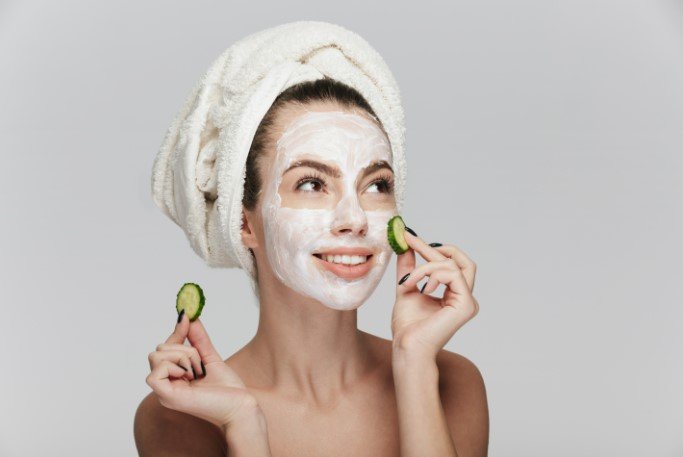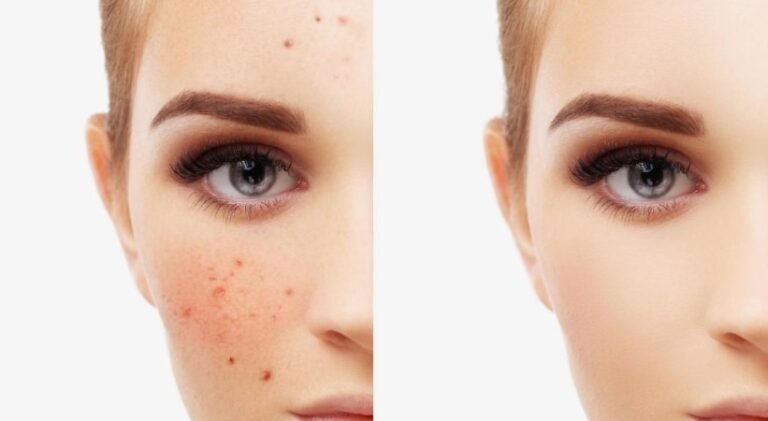How to Find the Best Skincare Products for You
Before diving into the world of skincare products, it is crucial to understand your skin type. There are generally five skin types: normal, oily, dry, combination, and sensitive. Each skin type has specific characteristics and requires different types of care. Normal skin is well-balanced, oily skin produces excess sebum, dry skin lacks moisture, combination skin has both oily and dry areas, and sensitive skin is prone to irritation. Knowing your skin type will help you select products that address your specific needs.
To determine your skin type, observe how your skin feels after washing it with a gentle cleanser and waiting for about an hour without applying any products. If your skin feels tight and looks flaky or dull, you likely have dry skin. If it appears shiny all over, you have oily skin. Combination skin typically shows oiliness in the T-zone (forehead, nose, and chin) while being dry on the cheeks. Sensitive skin often reacts with redness, itching, or burning to certain products or environmental factors.
Identifying Skin Concerns
After determining your skin type, the next step is to identify any specific skin concerns you want to address. Common concerns include acne, aging signs like wrinkles and fine lines, hyperpigmentation, large pores, and dullness. Different products are formulated to target these issues, so knowing your concerns will help you narrow down your choices.
For instance, if you are struggling with acne, look for products containing ingredients like salicylic acid, benzoyl peroxide, or tea tree oil. For anti-aging, ingredients such as retinol, hyaluronic acid, and peptides are beneficial. Hyperpigmentation can be treated with products containing vitamin C, niacinamide, or alpha hydroxy acids (AHAs). Understanding your skin concerns will guide you towards products that can effectively address them.
Reading Ingredient Labels
Once you have identified your skin type and concerns, it is time to start examining product ingredient labels. This step is crucial because the ingredients determine the effectiveness and safety of the product. Look for active ingredients that are known to benefit your skin type and address your concerns. However, also be wary of potential irritants, especially if you have sensitive skin.
Common beneficial ingredients include:
- Hyaluronic Acid: Great for hydrating all skin types.
- Salicylic Acid: Effective for treating acne-prone skin.
- Retinol: A powerful anti-aging ingredient.
- Vitamin C: Brightens the skin and reduces hyperpigmentation.
- Niacinamide: Reduces inflammation and improves the skin barrier.
Avoid products with alcohol, synthetic fragrances, and sulfates if you have sensitive or dry skin, as these can be irritating and drying.
Patch Testing
Even if a product has excellent ingredients, it is essential to perform a patch test before fully incorporating it into your skincare routine. A patch test helps to ensure that you do not have an allergic reaction to the product. To do this, apply a small amount of the product to a discreet area of your skin, like the inside of your wrist or behind your ear. Wait 24 to 48 hours and observe for any signs of irritation, redness, or itching. If no reaction occurs, the product is likely safe for you to use.
Considering Product Reviews and Recommendations
Reading reviews and seeking recommendations can provide valuable insights into how a product performs. Look for reviews from people with a similar skin type and concerns as yours. Online beauty forums, skincare communities, and social media platforms like Instagram and YouTube can be great resources for honest product reviews. Additionally, consider recommendations from dermatologists or skincare professionals, as they have expert knowledge about effective products.
Budget and Brand Reputation
Skincare products come in a wide range of prices, from budget-friendly options to high-end luxury items. It is important to find products that fit your budget while still being effective. Often, drugstore brands offer high-quality products at affordable prices. When considering a new product, look into the brand’s reputation. Brands with a long history of positive reviews and transparent ingredient lists are generally more reliable.
Building a Skincare Routine
Once you have selected the right products, it is important to incorporate them into a consistent skincare routine. A basic routine typically includes cleansing, toning, moisturizing, and sun protection in the morning, with the addition of treatments like serums or exfoliants in the evening. Start with a gentle cleanser to remove impurities, follow with a toner to balance your skin’s pH, apply a moisturizer to hydrate, and always finish with sunscreen during the day to protect against UV damage.
Evaluating and Adjusting Your Routine
After building your skincare routine, give it time to work. Skincare products usually take several weeks to show results, so be patient. Keep track of how your skin responds and make adjustments as needed. If you notice any adverse reactions, discontinue use of the problematic product and consult with a dermatologist if necessary. Periodically reassess your skin type and concerns, as they can change due to factors like age, weather, and lifestyle.
Consulting with a Dermatologist
If you are unsure about which products to use or have persistent skin issues, it is always a good idea to consult with a dermatologist. They can provide personalized advice based on a professional assessment of your skin. Dermatologists can also prescribe stronger treatments if over-the-counter products are not effective for your needs.
Conclusion
Finding the best skincare products for you involves understanding your skin type, identifying your skin concerns, reading ingredient labels, performing patch tests, considering product reviews and recommendations, staying within your budget, and building a consistent skincare routine. By following these steps and being patient with the process, you can discover products that enhance the health and appearance of your skin. Remember, everyone’s skin is unique, so what works for one person may not work for another. It is important to listen to your skin and make adjustments as needed to achieve the best results.







